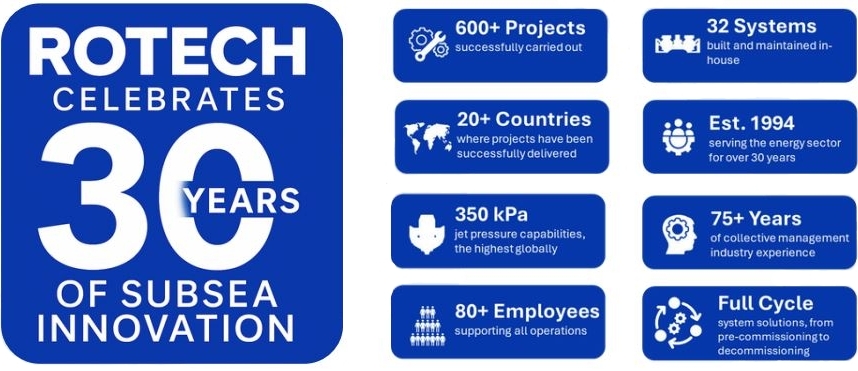
Rotech Company History
30 YEARS OF SUBSEA INNOVATION
1994
Rotech began development of its first Mass Flow Excavation tool, the FlowDredger in 1994, and have been at the forefront of research and development in the sector ever since. The original aim was to create a stable tool capable of excavating large amounts of soft seabed material quickly, which was achieved using a very large volume jet of seawater at relatively low pressure. The FlowDredger employed two counter-rotating impellers operating in series and a seawater-driven hydraulic motor. This first tool was capable of producing up to 8000 litres per second at a pressure of 11kPa, giving a powerful 85kW jet.
1998
Rotech bulit the first T-shaped excavator in 1998, with oil hydraulics replacing the seawater drive. The switch to oil hydraulics improved efficiency and longevity, the patented T-shape improved stability and at the same time enhanced access to the internal components for offshore maintenance. The ‘T8000’ as it was named had the same performance as the original excavator, up to 8000 litres per second at a pressure of 11kPa with a jet power of 85kW. At lower flow rates the jet power could be increased to 130kW. The target market was still large scale excavations, such as for deburial of large structures in decommissioning work and trenching or deburial of large pipes for the oil & gas industry. With two sizes of ‘T’ excavators plus a ‘Twin’ design for straddling pipe or cable, these excavators were the best Mass Flow Excavation tools available for over a decade and a half.
2000
The company successfully carried out the post-trenching of a 70-kilometre, 36-inch pipeline off the coast of Egypt. This early achievement demonstrated Rotech Subsea’s capability to deliver complex offshore solutions and laid the foundation for its future growth in the global energy market.
2005
Rotech Subsea achieved a milestone by completing its first deepwater excavation at a depth of 1,000 metres. This milestone demonstrated the capability of Rotech’s early tools to perform in demanding deepwater environments and marked an important step in the evolution of subsea excavation techniques, a full decade before the launch of its next-generation controlled flow excavation (CFE) systems.

2011
Rotech’s excavation business and worldwide fleet of Mass Flow Tools were sold to Norwegian based offshore company REEF Subsea in November 2011. With increased customer focus on narrower trench profiles for subsea cable protection and demand for more capable and more controlled excavation tools, following the sale to Reef, Rotech enabled the development of a new generation of subsea cables by providing backfill protection.
2015
The Rotech RS1 Controlled Flow Excavator was designed for the demands of the offshore windfarm market. As a result of hydrodynamic design optimisation, the new RS range of tools deliver much greater efficiency and higher cutting capability in a more compact unit than offered by any of our previous excavators. This means that not only can the RS1 be used to create narrower trenches with better depth control, it can also be used to extract excavated material out of the trench and pump it to a different location. Combined with Rotech’s new BackFill Box, this allows for simultaneous trenching and burial of cable.
The RS1 is a higher pressure and lower flow device than Rotech’s previous generation of excavator designs. The twinned unit, the TRS1, provides 4,000 litres per second at a pressure of 35kPa. High pressure nozzles allow the RS1 to produce up to 100kPa jet pressure. Peak jet power is now up to 215kW.
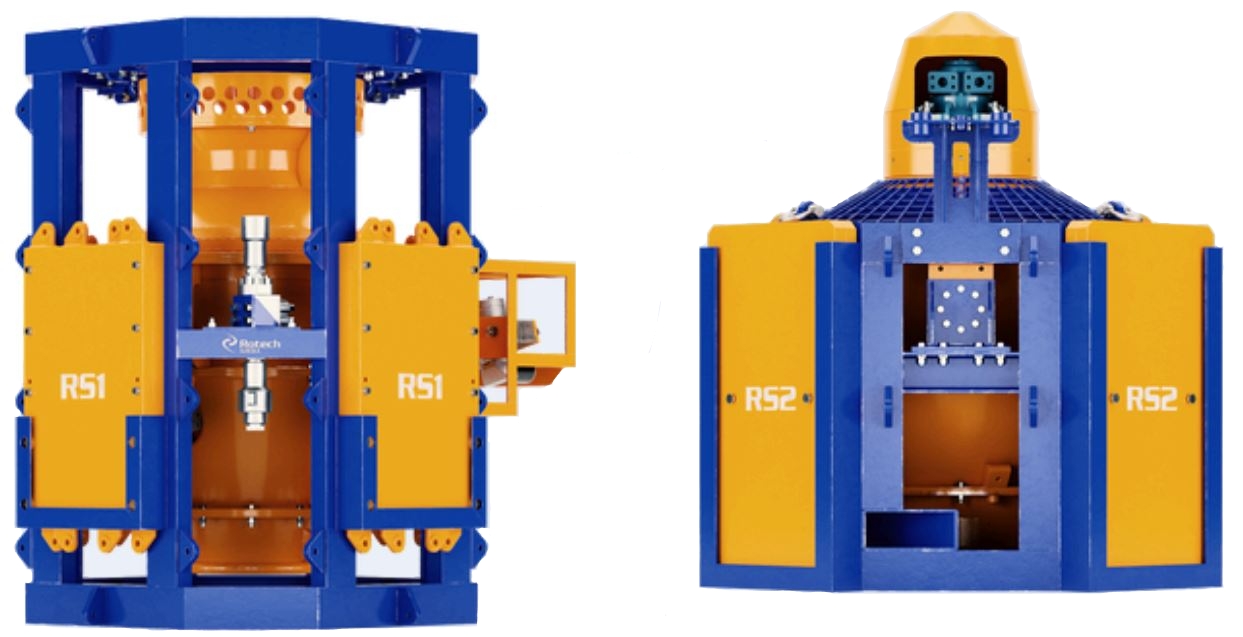
2016
The Rotech RS2 Controlled Flow Excavator has been developed for larger scale excavations such as sandwave clearance and freespan correction of cables and pipelines. The TRS2 twin unit produces 8,000 litres per second at 60kPa, giving a jet power of 240kW. The RS2 also comes in a shallow water variant capable of working in 1 to 2m of water. Over 22 years of development we have almost trebled the jet power of our excavators, they now have almost six times the jetting power of our earlier models, with even better control and stability.
2017
Launched the RSGC subsea cable grab tool, strengthening the company's capabilities in cable and pipeline recovery. That same year, the company reinforced its position as the global partner of choice for trenching, excavation, and freespan correction. Rotech also developed the new TRS1-LD system, tailored for ultra-shallow operations in water depths as low as 1 metre, and adapted the RS1 tool for harbour clearance work following contracts secured with various Port Authorities.
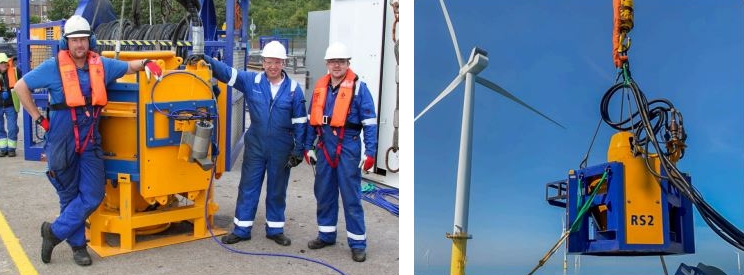
2020
Rotech Subsea successfully executes major cable posttrenching and sandwave clearance campaigns in Taiwan, marking a significant milestone in its strategic expansion into the Asian offshore energy market. Winning these projects demonstrates the efficiency and reliability of Rotech’s CFE technology in challenging seabed conditions, strengthening relationships with key regional clients and establishing a solid foothold for future operations across Asia.
2021
Rotech Subsea re-entered the USA market in response to increasing demand across the offshore wind and energy sectors. This strategic return formed part of the company’s broader global growth plans. To support the surge in international project activity, Rotech invested significantly in expanding its fleet of their cutting-edge CFE tooling. This expansion enhanced operational capacity and ensured faster, more efficient deployment of its services to clients worldwide.
2022
The company successfully launched its innovative RSBG (Boulder Grab). The debut of the RSBG took place on a significant international project, where Rotech was contracted to deliver critical seabed preparation works at two offshore wind farms in Asia. This marked not only the introduction of a powerful new tool in the company’s equipment portfolio but also a key step in Rotech’s continued expansion into the Asia-Pacific offshore renewables market.
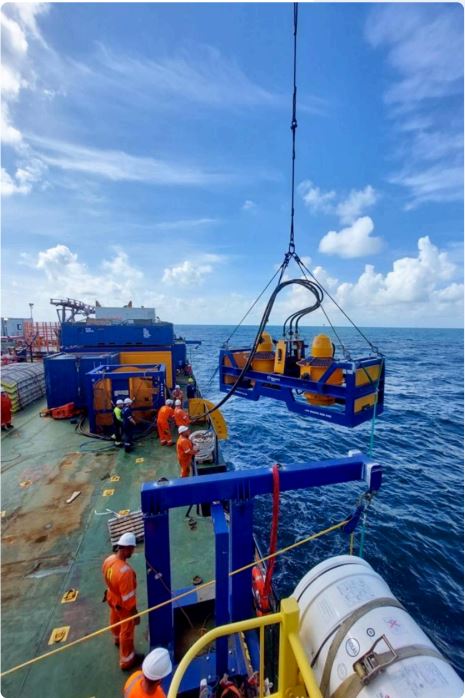
2023
Rotech Subsea launched the state-of-the-art Hybrid Tooling RS3 system, a next-generation solution that has significantly advanced the company's capabilities in both jet trenching and controlled flow excavation (CFE). Capable of generating jet pressures up to 350kPa, the RS3 can effectively penetrate dense seabed materials, delivering deep, narrow trenches ideal for cable and pipeline burial.

2024
A landmark year for Rotech as the company proudly celebrated 30 years in the sector. Far from simply marking a milestone, Rotech used this moment to accelerate its global momentum. The opening of a new office in Providence, Rhode Island, allowing for a stronger presence in the US market , reinforcing the company’s international footprint. With a surge in project demand and strategic growth across multiple regions, 2024 became a defining chapter in Rotech’s journey of innovation, expansion, and global leadership!
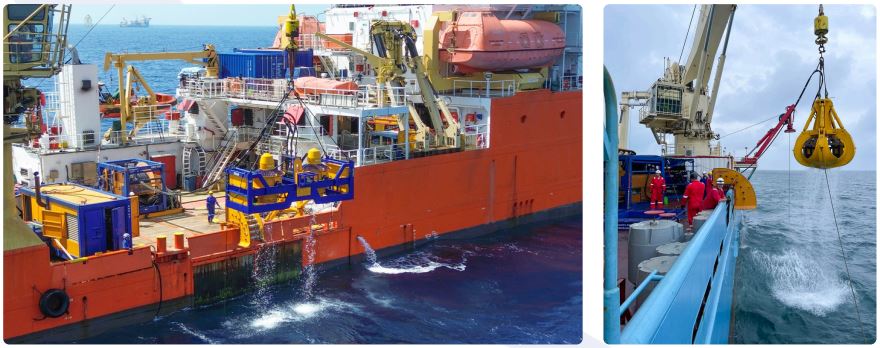
Rotech Timeline
2024 Rotech Subsea celebrate 30 years in the industry, open a new office in the USA and experience a surge in project demand.
2023 Rotech Subsea launch the state-of-the-art Hybrid Tooling RS3 system.
2021 Rotech Subsea re-enter the USA market and invest in building more equipment for global demand.
2020 Rotech Subsea carry out major cable post trenching and sandwaves campaigns in Taiwan.
2019 Rotech Subsea were contracted directly by Orsted for completion of cable lowering on a major wind farm before OFTO hand over. Rotech Subsea chartered vessel and carried out all project operations. The TRS1-LD system was selected due to its unrivalled capabilities.
2019 Rotech Subsea complete their 500th offshore project having a track record since 1994.
2019 Rotech Subsea re-enter the Middle East and position equipment to meet demand.
2019 Rotech Subsea boosts Business Development team by appointing Anthony Bews in Europe as Oil & Gas BDM.
2018 Rotech Subsea TRS2 system positioned and housed in ASIA to meet market demands for CFE works.
2017 Rotech Subsea build the new TRS1-LD System for operations within 1m water depths and adapts the RS1 for Harbour Clearance operations further to Port Authority contracts.
2017 Rotech Subsea establishes itself as the global partner of choice for trenching, excavation and freespan correction.
2017 Rotech Subsea launches new RSG1 subsea cable grab tool, designed and manufactured in-house. As well as deburying cable, the RSG1 can lift cable for repair and boasts real-time sonar monitoring with subsea camera and lights - which can also be applied for Umbilical recovery, Pipeline recovery as well as rock removal and relocation.
2017 Appointment of excavation specialist, Stephen Sin, as new Asia team leader of Rotech Subsea ahead of mobilising the TRS2 tool to Yangon (Myanmar).
2016 Rotech directors Dr Donald Stewart, Martin Graham & Stephen Cochrane along with Chairman Mike Hill lead the three operating companies, Engineering, Fabrication & Subsea in a Rotech management buyout (MBO).
2016 Rotech celebrates 30 years in the offshore sector and Rotech Subsea launch the new TRS2 systems for major sandwave clearance and pipeline trenching scopes.
2015 Rotech Subsea re-enters the oil & gas and energy sectors with the new Controlled Flow Technology & RS Excavation Range. RS1, TRS1 and Backfilling systems operate successfully on commercial projects.
2014 Rotech’s TurboMac short, high-temperature drilling turbine completes first drilling trials.
2011 Rotech wins contract with Shell to design a tool for decontaminating subsea structures prior to decommissioning.
2011 Rotech sells 'T-shaped' Subsea Excavation Assets, including its USA and Singapore subsidiaries, to REEF AS of Norway.
2010 Rotech Subsea opens sales office in Rio de Janeiro.
2006 Rotech Subsea opens sales and maintenance facilities at Cunningham Business Park, Houston. Singapore sales office opened and Rotech Subsea Asia Pacific PTE LTD formed.
2005 First subsea deepwater excavation completed in 1000 metres water depth.
2004 Rotech opens Subsea USA LLC to service US GOM.
2003 Commenced development of the Rotech Tidal Turbine under the DTI Sustainable Energy Programmes.
2000 Rotech Subsea Ltd formed. First post-trenching of a 70km 36” pipeline completed in Egypt.
1998 First commercial field trial of Rotech 'T-shaped' subsea excavation equipment successfully completed on the Cardiff Bay Barrage project.
1998 Rotech licenses MacDrill technology to Weatherford International Inc.
1996 First commercial MacDrill field trials in Norwegian Sector of the North Sea for BP and Statoil.
1994 Rotech acquires VSO as the first step towards establishing a group of companies focused on developing new energy related technologies and commenced development of:
- the MacDrill motor, an innovative all-metal downhole motor for oil, gas and geothermal applications.
- the Flowdredger, a mass flow excavation device incorporating twin inline counter-rotating impeller.
1986 Volker Stevin Offshore (UK) Limited (VSO) was established to provide fabrication services to the North Sea offshore energy industry.